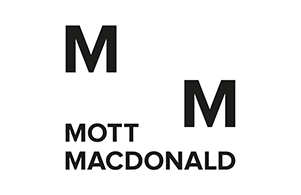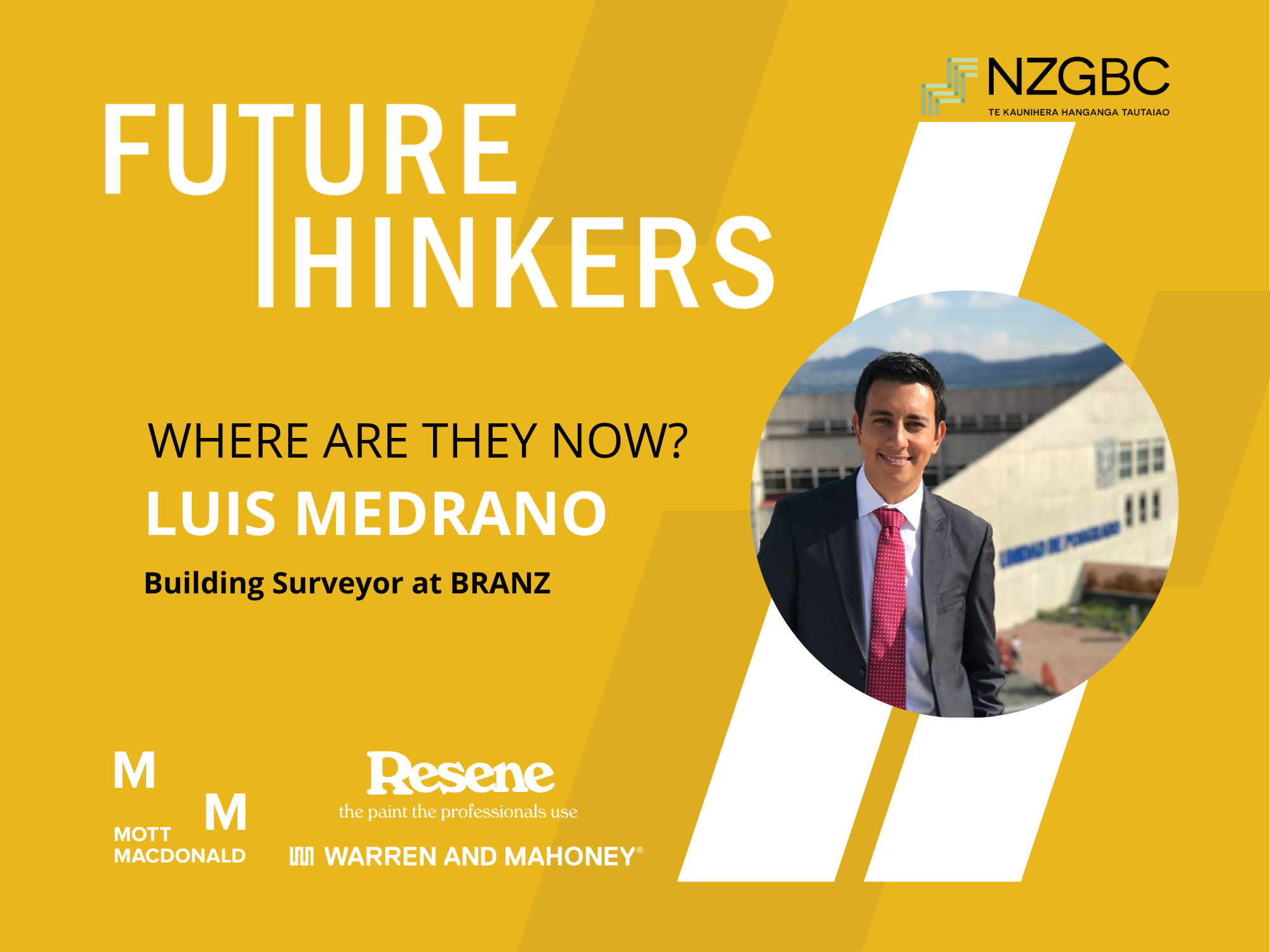Our Future Thinker of The Year awards brings together some of the most innovative, passionate and exciting up-and-coming voices in driving better futures through sustainability. Now in its sixth year, it’s safe to say that we’ve seen some inspiring young leaders go on to make their mark in the sector and become positive change-makers contributing to a greener built environment in Aotearoa.
Every year, our judging panel and the NZGBCD team is blown away by the diverse backgrounds and ambition of the nominees so through the “Future Thinkers, where are they now?” series we’re touching base with past finalists and winners, exploring the journey their careers have taken so far, their learnings, and thoughts on making the property and construction sectors more sustainable.
Luis Medrano
Luis was a finalist in the 2023 FTOTY awards. He is currently a Building Surveyor at BRANZ and an Academic Supervisor at The University of Auckland’s Master of Architecture Programme. Luis is currently studying towards a PhD in Architecture from The University of Auckland, holds a Master’s degree in Architecture from Universidad Nacional Autónoma de México and a Bachelor of Architecture with honours from Universidad Autónoma del Estado de Morelos.
What drives your passion for sustainability and what piqued your interest in it?
My passion for sustainability is driven by a deep desire to contribute to the creation of a resilient built environment where individuals can work, live, and play comfortably while making a positive impact on the natural world. My interest in sustainability was sparked during my professional practice in the construction industry, both in Mexico and the US. It became evident that the main factors influencing decision-making were often economic considerations and time constraints. Unfortunately, this has led to high energy consumption in buildings, discomfort for occupants, and adverse effects on the environment.
Recognizing this imbalance and my responsibility as an architect pushed me to research sustainable practices and solutions. I am driven by the belief that a shift towards sustainability in construction and design can not only mitigate environmental impacts but also enhance the well-being of individuals within our cities. This realization has become a driving force behind my commitment to sustainability, inspiring me to explore innovative approaches and advocate for their integration into the core of the design and construction industry.
Your career has spanned Mexico, and New Zealand. What have you learned regarding different sustainability practices in these countries?
Through my experiences in Mexico, the US and New Zealand, I've found that successful sustainability practices hinge on collaboration among various stakeholders—industry, academia, politics, and users. Each group comes with different motivations, and the challenge is aligning these diverse interests toward a common goal.
One bright spot has been encountering a wealth of talented and passionate professionals worldwide. Their enthusiasm to learn and adopt sustainable practices is truly inspiring. It's a reassuring reminder that, despite our varied backgrounds, there's a universal commitment to making a positive impact. When we bring these diverse perspectives together, we not only encourage innovation but also create a collective force capable of driving significant change in the field of sustainability.
Can you please tell us about your current PHD studies and area of research?
My area of research is focused on the enhancement of home improvement programmes – also known as retrofit programmes – to better align with people’s needs and aspirations. The aim is to ensure we are able to improve the thermal and energy performance of our existing residential stock while considering current household practices. It's about making sustainable upgrades more practical and aligned with the way people live. I am currently in my last year of the PhD, so you can all imagine the crunch time I am experiencing at the moment!
What has been the biggest professional challenge you’ve experienced in your career?
Leading construction projects in New York, while based in Mexico, was my biggest professional challenge. This involved adapting to a different system of measurement units and predominantly working in a different language. Alongside my team, we tackled tasks such as creating construction documents and coordination Revit models from building scans, often without setting foot on the actual site. Once that stage was completed, my responsibilities extended to securing workers, materials, permits, and inspections, ensuring that the projects were executed seamlessly and met their budgets and deadlines.
What has been your career highlight?
My career highlight has been building a team of architects in Mexico that excelled in the competitive New York market. My aim was to create and foster an environment where each team member felt valued and could unleash their full potential. Although challenging, the effort paid off, and we evolved into a highly effective team capable of designing and managing multiple construction projects simultaneously.
What is the biggest challenge of applying sustainability in architectural practices?
The biggest challenge in integrating sustainability into architectural practices lies in establishing a market for efficient, low-carbon solutions and making them the standard. This necessitates a collective effort from all stakeholders. We require increased research and development for decarbonised solutions and technologies, policies that address current challenges linked to the climate crisis, an informed building industry ready to evolve outdated practices, and users who are more conscious of their responsibility when operating buildings. Shaping this comprehensive shift demands coordinated action from all involved parties.
What actions can society and individuals take to continue to de-carbonise and create a more sustainable future?
To further decarbonise and shape a sustainable future, society and individuals can take action by making conscious changes in their lifestyles. This involves reducing our environmental footprint in various aspects, such as our choices in food, clothing, and means of transportation. It's encouraging to see a growing number of individuals interested in learning about these topics and actively making lifestyle changes. The shift towards sustainability involves breaking away from practices inherited from previous generations that have proven to be unsustainable. Embracing this awareness collectively will contribute significantly to creating a more sustainable and environmentally conscious future.
If you could give any advice to yourself five years ago, what would that be?
If I could give advice to myself five years ago, I'd emphasize the importance of patience. Often, we want things to happen exactly as we plan, and when they don't, it can be frustrating. I would remind myself that sometimes, the setbacks are opportunities to learn and grow, preparing us for future challenges. Specifically, five years ago, I was eager to secure a scholarship for my PhD, and when it didn't happen as quickly as I hoped, I was quite impatient. Looking back, that delay led me to new opportunities in the US market, where I met incredible colleagues and grew as an architect. Eventually, I earned my scholarship a few years later, but the experience made me more mature and better prepared for the journey ahead.
Lastly, what do you love about your mahi?
What I absolutely love about my mahi is the chance to inspire young architecture students. It's incredibly fulfilling to guide them in exploring ways to decarbonise the built environment and encourage them to shape their careers around creating sustainable and resilient buildings. Additionally, I feel grateful to be in such a beautiful country, immersing myself in a new culture, learning about different sustainable practices, and connecting with many talented and passionate individuals, all dedicated to enhancing our built environment. It's these aspects that make my mahi truly rewarding and meaningful.



